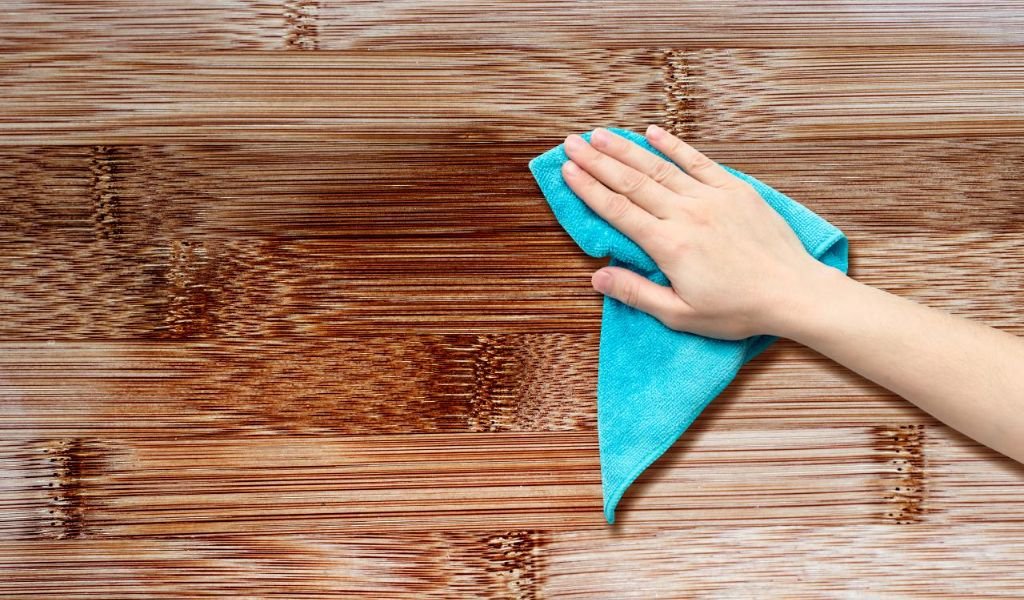How to Clean Furniture Before Painting
Are you prepared to give your old furniture a vibrant new appearance by painting it? Before using brushes and rollers, a crucial phase is frequently overlooked: cleansing! Yes, that is correct. Cleaning your furniture before painting is essential for a durable and clean finish. Whether you’re working with wood, metal, or upholstered pieces, this article by Design Furniture will guide you through the appropriate cleansing techniques to ensure a faultless paint job. So before you liberate your creativity, let’s delve in and learn how to clean furniture like a pro!

Why Should Furniture Be Cleaned Before Painting?
When painting furniture, many individuals undervalue the significance of cleansing before the enjoyable aspect. However, sanitizing your furniture thoroughly can significantly affect the final result.
- First and foremost, cleansing removes any remaining filth, residue, or oil from the surface. These contaminants can prevent paint from adhering properly, resulting in an imperfect finish. By thoroughly cleaning your furniture before painting, you ensure the paint will adhere effortlessly and uniformly.
- Cleaning helps you determine furniture condition. It reveals shards and cracks before painting. Early resolution of these difficulties ensures a smooth, professional finish.
- Additionally, cleaning eliminates fragrances that may have been absorbed by upholstered furniture over time. Getting rid of these disagreeable odors, whether the result of pets or previous accidents, will not only improve the aesthetics of your home but also create a clean and inviting atmosphere.
- By beginning with a blank slate, you will have more control over the color selections for your painted furniture. Achieving true-to-color results with no unanticipated variations is possible without any grime or blemishes interfering with the color application process.
Remember: this is an essential phase! It is well worth the effort to thoroughly clean your furniture before painting it, as this ensures a gorgeous finish that will withstand wear and strain for many years.
How to Clean Wood Furniture in Preparation for Painting
Preparing your wood furniture before painting is essential for a successful endeavor. Here are some basic methods for effectively cleaning your wooden furniture.
- First, remove dust and detritus from the furniture’s surface by rubbing it down with a dry fabric or gentle brush.
- Combine a small quantity of gentle dish soap with tepid water in a pail or receptacle. Soak a clean fabric in the detergent water solution, rinse out any excess liquid, and cleanse the entire surface of the furniture with care.
- Pay attention to stains: Instead of detergent, use equal vinegar and water to remove obstinate stains. Apply this solution directly to the stain with a clean cloth and cleanse gently until the stain has been removed.
- Thoroughly rinsing can let you win the stin battle, as after cleansing, remove any detergent residue from the wood by rinsing it with a clean, wet cloth.
- Allow time for drying: Before proceeding to the next painting stage, give your wood furniture sufficient time to cure completely.
Cleaning Metal Furniture Before Painting
To ensure a seamless and successful paint job, it is essential to thoroughly clean your metal furniture before painting. In addition to removing filth and grime, cleaning metal furniture eliminates any oil or corrosion that could prevent the paint from adhering.
- Start by rubbing the metal’s surface with tepid water and mild dish detergent. This will help eradicate any grime or particles on the surface. Gently clean stubborn spots using a sponge or towel.
- You can use a mixture of vinegar and water in equal parts for harsher stains or oil deposits. Apply this solution with a soft-bristled swab to the affected area, then cleanse with clean water.
- Before painting, it is essential to remove any corrosion from metal furniture if it shows any symptoms of rust. Using sandpaper or steel wool, remove corrosion stains until you reach exposed metal. Remove any residue using a clean cloth.
- After cleansing, ensure your metal furniture is completely dried before applying primer or paint. Moisture on the surface might weaken adherence and cause flaking later.
- When painting metal furniture, remember that thorough preparation is the key to attaining professional-looking results. Taking the time to thoroughly clean and prepare surfaces will improve adhesion and prolong the life of your paint finish!
How to Prepare Upholstery for Painting
- Upholstered furniture enhances any space. Sanitize the upholstery before painting. Try these methods!
- Start by cleaning the upholstery. Carefully vacuum pet hair, dirt, and debris using a brush attachment. Clean everything, especially between cushions.
- Check the cleaning codes or markings on your upholstered furniture against the manufacturer’s instructions. This will help you ascertain the appropriate cleansing procedure for your fabric.
- Use rubbing alcohol or watered-down liquor to dry-clean “S” materials. Gently wipe the stain with the solution with a clean towel.
- Avoid saturating the fabric, as doing so could result in damage.
- For fabrics marked with a “W,” use a mixture of moderate detergent and water. Scrub away any blemishes and dirt using a soft cloth dampened with the detergent solution.
- Rinse your cloth frequently with clean water to prevent the spread of grime.
- Remember not to overwet the fabric during this procedure, as excessive moisture can result in mildew growth or fabric damage.
- Allow ample time for your upholstered furniture to air dry completely after removing all visible stains before painting it.
By following these easy steps, your upholstered furniture will be gorgeously spotless and ready for a fresh application of paint!
Conclusion
Upholstered furniture needs extra attention before painting. Start by cleaning crevices. Remove stains using upholstery cleaners or homemade treatments. After cleaning, let the fabric-friendly primer and paint dry. Remember that furniture cleaning methods vary. If unsure about cleaning materials or methods, consult the manufacturer. Before painting, properly clean your furniture to enhance outcomes, increase its longevity, and refresh your area. So be ready to DIY! Today, painter-clean your furniture!





